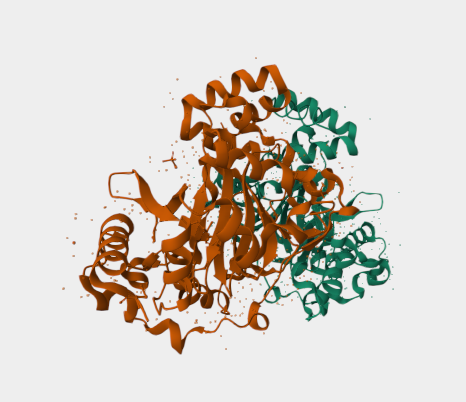Key features and details | |
Cat. No. | MABL-2178 |
Name | Anti-JMJD6 mAbs |
Clone No. | AFD- APSR-14.4 |
From | Recombinant Antibody |
Isotype | Engineer antibody |
Application | crystallisation, IP, WB, IF |
Species Reactivity | Human |
Basic Information | |
Specificity | APSR-14.4 was shown crystallographically to bind the C-terminal helix-turn-helix domain of JMJD6 (Hong et al, 2010). JMJD6 was initially identified as a phosphatidylserine receptor, but is now known to be a multifunctional histone modifier which may also be implied in RNA splicing. JMJD6 expression levels have more recently been associated with poor outcomes in breast cancer tumours (Lee et al, 2012). |
Alternative Name | HisArgDeMe; Bifunctional arginine demethylase and lysyl-hydroxylase JMJD6; Histone arginine demethylase JMJD6; Jumonji domain-containing protein 6; JmjC domain-containing protein 6; Lysyl-hydroxylase JMJD6; Peptide-lysine 5-dioxygenase JMJD6; Phosphatidylserine recep |
UniProt | Q6NYC1 |
Immunogen | APSR-14.4 was produced by immunising Armenian hamsters using human His-tagged JMJD6. |
Application Notes | The APSR-14.4 Fab region was used to facilitate crystallisation of JMJD6 (Hong et al, 2010). The mAb has also been used to identify JMJD6 both using Western blot as well as by immunofluorescent staining of of 293 cells (National Jewish Medical and Research Center, unpublished). |
Antibody First Published | Davis, L.A. Beyond the name: the characterisation of the phosphatidylserine receptor. ProQuest Dissertations Publishing, 2008. |
Note on publication | Describes characterisation of JMJD6 in terms of subcellular localisation and function. mAb APSR-14.4 was provided to support experiments within this study by Janice White (unpublished). |
COA Information (For reference only, actual COA shall prevail) | |
Size | 100 μg Purified antibody. |
Concentration | 1 mg/ml. |
Purification | Protein A affinity purified |
Buffer | PBS with 0.02% Proclin 300. |
Concentration | 1 mg/ml. |
Storage Recommendation | Store at 4⁰C for up to 3 months. For longer storage, aliquot and store at - 20⁰C. |



